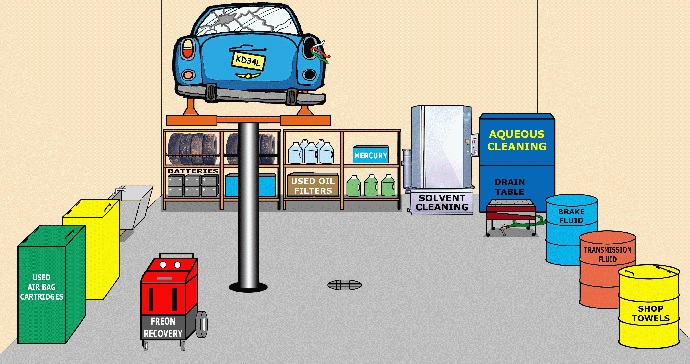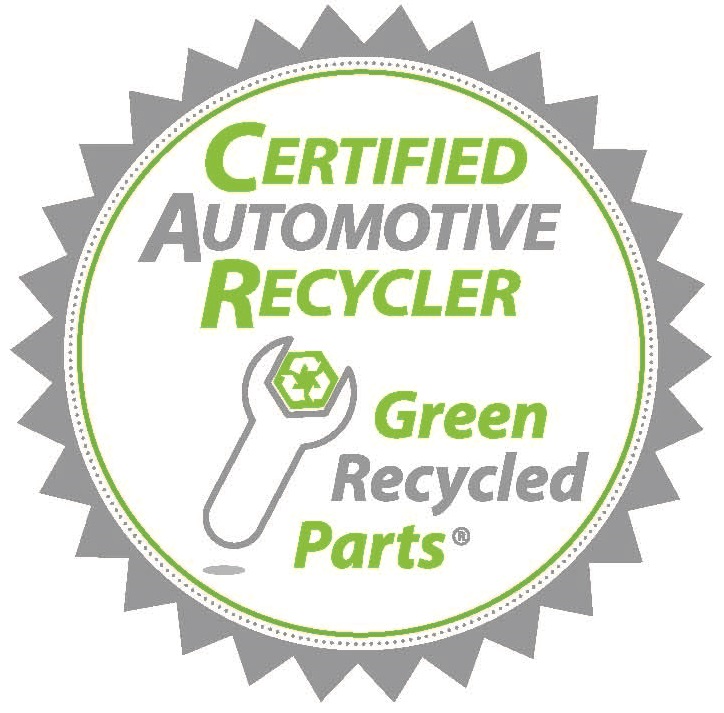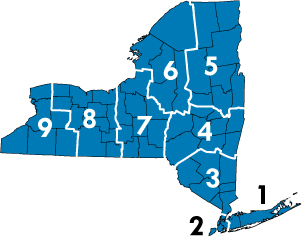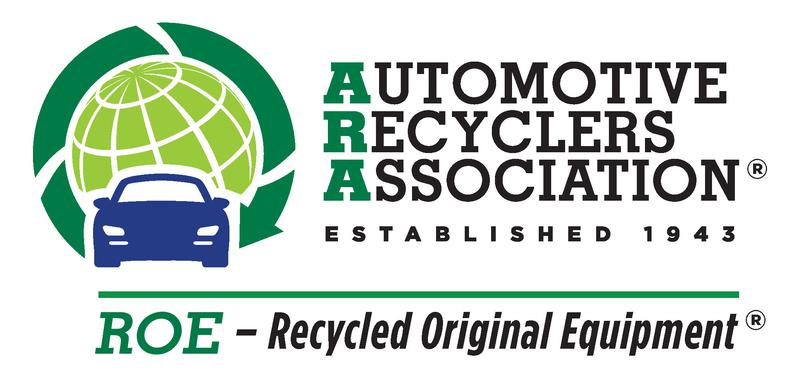Certified Auto Recyclers
Many professional automotive recyclers use a certification program to attain and maintain compliance with environmental, safety and transportation rules applicable to salvage facilities. The Automotive Recyclers Association (ARA) Certified Auto Recyclers (CAR) program sets a standard of excellence as the path to compliance.
Members of the Automotive Recyclers Association of New York utilize the ARA CAR program as a resource. Facilities that have achieved certification communicate to the marketplace that they have successfully undergone a comprehensive assessment and their processes and organization meet defined standards.
Regulatory Agency
The New York State Department of Environmental Conservation (DEC) was created on July 1, 1970 to combine in a single agency all state programs designed to protect and enhance the environment. DEC has 24 divisions and offices and is further organized into bureaus to fulfill the functions and regulations established by Title 6 of New York Codes, Rules and Regulations (6NYCRR). Some programs are also governed by federal law.
Central Office and Regional Offices:
DEC's Central Office is in Albany. Each of DEC's nine regions has an office that serves the communities within that region.
Region 1: (Long Island) Nassau and Suffolk counties
Region 2: (New York City) Brooklyn (Kings County), Bronx (Bronx County), Manhattan (New York County), Queens (Queens County) and Staten Island (Richmond County)
Region 3: (Lower Hudson Valley) Dutchess, Orange, Putnam, Rockland, Sullivan, Ulster and Westchester counties
Region 4: (Capital Region/Northern Catskills) Albany, Columbia, Delaware, Greene, Montgomery, Otsego, Rensselaer, Schenectady and Schoharie counties
Region 5: (Eastern Adirondacks/Lake Champlain) Clinton, Essex, Franklin, Fulton, Hamilton, Saratoga, Warren and Washington counties
Region 6: (Western Adirondacks/Eastern Lake Ontario) Herkimer, Jefferson, Lewis, Oneida and St. Lawrence counties
Region 7: (Central New York) Broome, Cayuga, Chenango, Cortland, Madison, Onondaga, Oswego, Tioga and Tompkins counties
Region 8: (Western Finger Lakes) Chemung, Genesee, Livingston, Monroe, Ontario, Orleans, Schuyler, Seneca, Steuben, Wayne and Yates counties
Region 9: (Western New York) Allegany, Chautauqua, Cattaraugus, Erie, Niagara and Wyoming counties
EPA Region 2 serving New Jersey, New York, Puerto Rico, US Virgin Islands and eight Indian Nations. https://www.epa.gov/aboutepa/epa-region-2
EPA Region 2
Ted Weiss Federal Building
290 Broadway
New York, NY 10007
(877) 251-4575
Stormwater Regulation
The Multi-Sector General Permit for Stormwater Discharges Associated with Industrial Activities (MSGP) addresses stormwater runoff from certain industrial activities. This permit requires facilities to develop stormwater pollution prevention prevention plans (SWPPPs) and report the results of industry-specific monitoring to the NYSDEC on an annual basi
Spill Reporting
The public can notify DEC of releases to the environment by calling the NYS Spill Hotline.
NYS Spill Hotline: 1-800-457-7362
National Response Center
If the hazardous condition involves the release of an EPA regulated material or an oil as defined by the EPA, the release may also need to be reported to the National Response Center at (800) 424-8802. Federal Reporting is required within 15 minutes of event occurrence or discovery.
The National Response Center (NRC) is a part of the federally established National Response System and staffed 24 hours a day by the U.S. Coast Guard. It is the designated federal point of contact for reporting all oil, chemical, radiological, biological and etiological discharges into the environment, anywhere in the United States and its territories.
Resources
Pollution Prevention Resource Exchange (P2Rx™) http://www.p2rx.org/
P2Rx is a national partnership of regional pollution prevention information centers funded in part through grants from EPA. We build networks, deliver P2 information, and measure P2 program results.
The Northeast Waste Management Officials' Association (NEWMOA) http://newmoa.org/
NEWMOA is a non-profit, non-partisan interstate association whose membership is composed of the state environmental agency directors of the hazardous waste, solid waste, waste site cleanup, emergency response, pollution prevention, and underground storage tank programs in Connecticut, Maine, Massachusetts, New Hampshire, New Jersey, New York, Rhode Island, and Vermont.
NEWMOA's mission is to develop, lead, and sustain an effective partnership of states that helps achieve a clean, healthy, and sustainable environment by exploring, developing, promoting, and implementing environmentally sound solutions.
NEWMOA’s projects include:
NEWMOA formed its Northeast Pollution Prevention and Sustainability Program in 1989 to enhance the capabilities of the state and local government environmental officials in the Northeast to implement effective multi-media source reduction and assistance programs and promote sustainability and improvement in public health and the environment. http://www.newmoa.org/prevention/about.cfm
Waste Tire Projects - NEWMOA has prepared several reports on waste tires to help inform state programs improve the management of this large waste stream, including:
Review of Northeast States' Tire Programs
Northeast End Markets Tire Waste Paper
Waste Tires in the NEWMOA States
Industry experts estimate that waste tires (also known as scrap tires) are generated at a rate of about one tire per person per year. Using recent census data for the northeast, NEWMOA estimates that the number of waste tires produced in the northeast is approximately 43.3 million per year (based on the 2018 census). Although today's tires last for more miles than they did in the past, the number of cars on the road is increasing, and the average number of miles driven annually is also increasing.
Auto Body Refinishing Project - NEWMOA worked with the Small Business Environmental Assistance Programs (SBEAPs) in the six US EPA Region 5 states (IL, IN, MI, MN, OH and WI) to develop and implement an Environmental Results Program (ERP) for autobody refinishing shops. https://www.newmoa.org/projects/region-5-autobody-initiative/
The Great Lakes Regional Pollution Prevention Roundtable (GLRPPR)
GLPPR serves the Great Lakes region of the United States (Illinois, Indiana, Michigan, Minnesota, New York, Ohio, Pennsylvania, and Wisconsin) and Canada (Ontario).
Their projects include:
A series of guides developed for small business is available at the Portal to resources developed by the GLRPPR including the Pollution Prevention 101 and the Green Business Guide. https://guides.library.illinois.edu/glrppr-archive/subject-guides
The following fact sheets are designed to assist automotive recyclers with operating their businesses and managing their wastes in compliance with the environmental laws in their state. Select from the list below.







